With a name that literally means “earthlike”, geodes are a thing of both beauty and wonder. Some believe they have magical properties while others merely love gazing at these marvels of Mother Nature.
But geodes are far more complex than you might first think. In fact, there are three ways geodes can form, as well as dozens of geode types based on the contents and even geode types based on their shape or location of origin.
An entire book could be written about these fascinating formations, but instead we’ll give you a small sampling of the most popular types based on formation and content.
See Also: 13 Types of Terrain
Types of Geodes
1. Agate Geode Egg
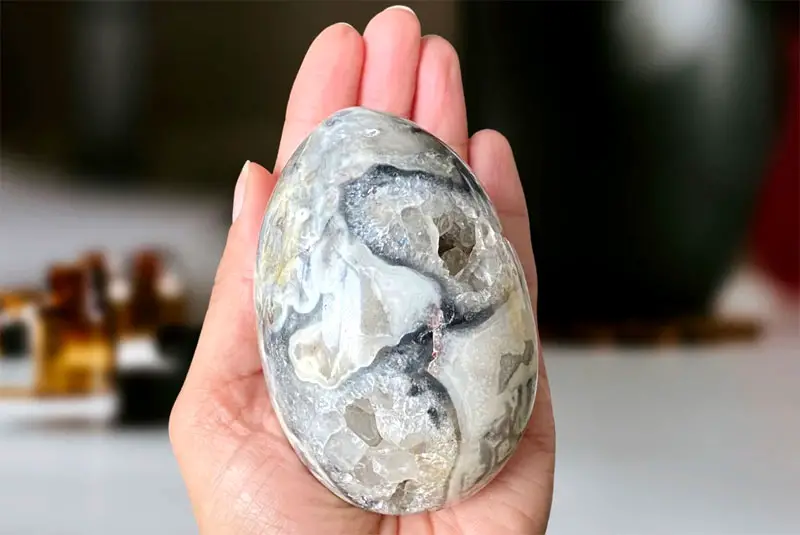
These geodes get their names from the fact that they are roughly egg-shaped and contain agate. Other types of agate geode also exist, but agate eggs are perhaps the most popular.
When cut open, they reveal a banded, rich blue interior. Mainly found in Brazil, they’re also known as Brazilian geodes.
2. Amethyst Geode
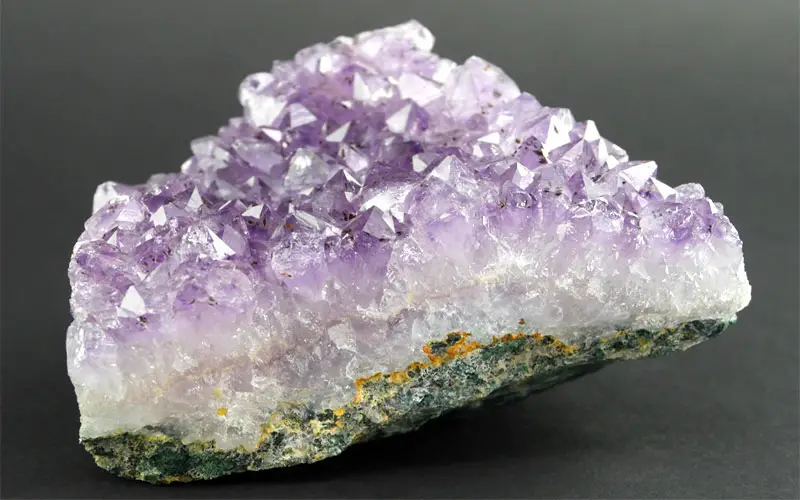
By far the most popular and one of the most common types of geode, amethyst has practically cornered the market. They can be bought in a variety of shapes, such as cathedral or cave, and can range from a light lavender to deep purple on the interior.
3. Celestine Geode
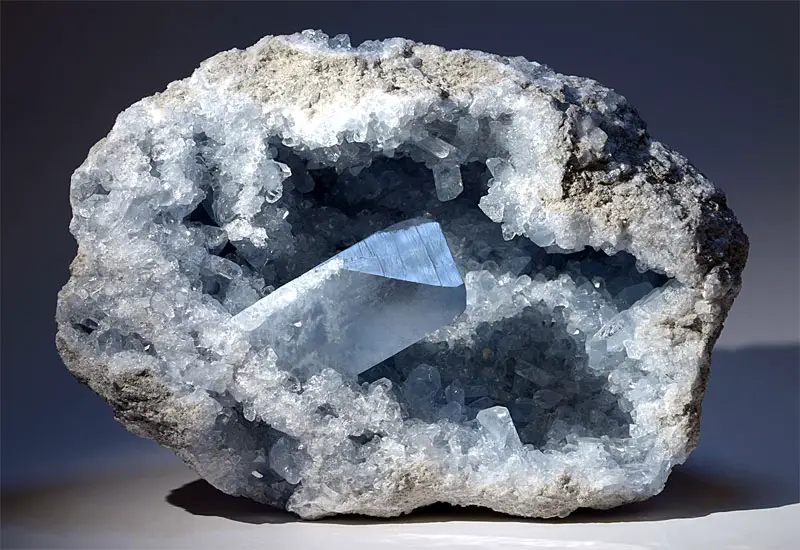
In contrast to the rich blue of agate, celestine has a light blue to clear tone that reminds one of clear tropical waters on a sunny day. These geodes make for amazing displays, especially when paired with other mineral types.
4. Chalcedony Geode
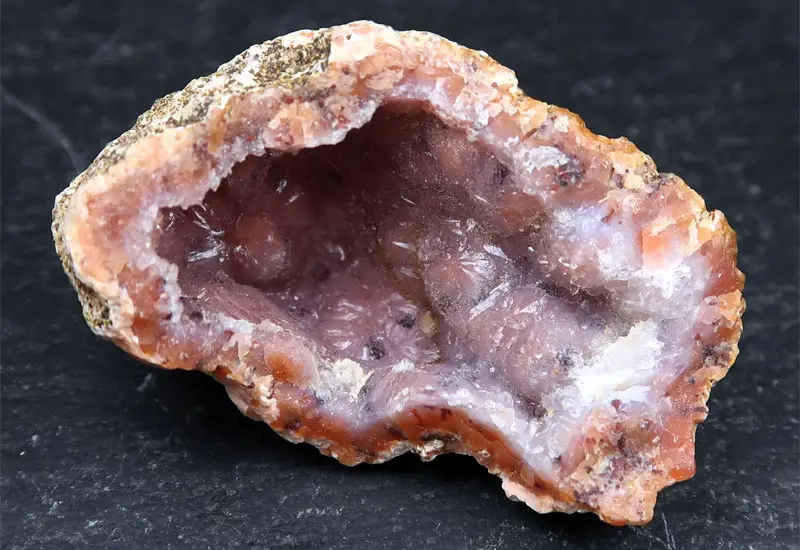
Chalcedony is a type of microcrystalline quartz that’s often present in geodes, but can also be the “filling” of a geode. When breaking open a chalcedony geode, you’re not greeted with beautiful crystals, but instead a surface that may look almost smooth or covered in bumps.
This latter type of formation is known as botryoidal and can be attractive in its own right, especially when the chalcedony has a tint to it.
Read Also: 7 Different Types of Reiki
5. Citrine Geode
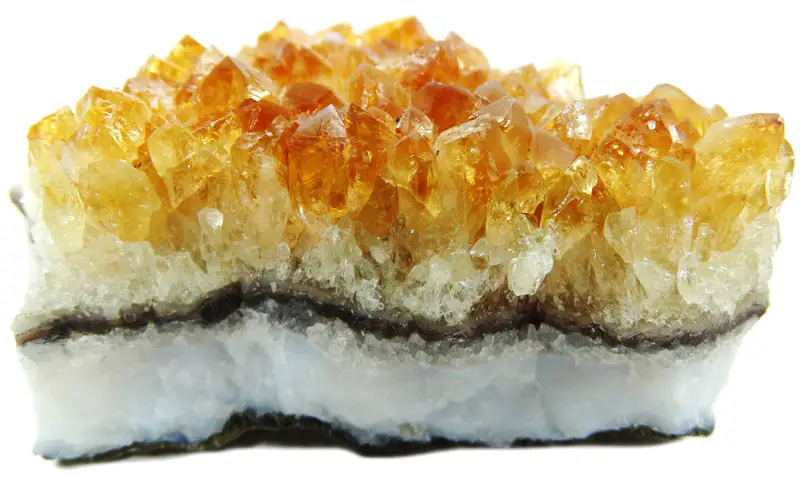
As the name implies, this mineral is a bright yellow, lending to a geode that resembles an inverted sun.
6. Faux Geode
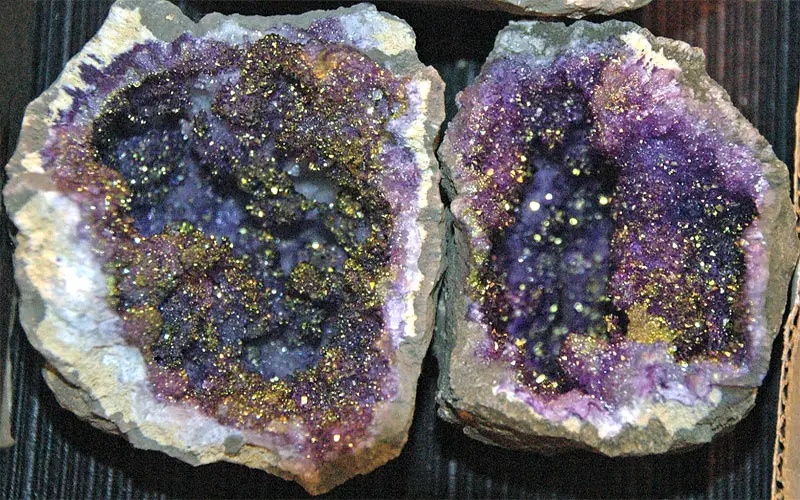
While it might make for a nice display, man-made geodes are something of an epidemic on the collector’s market. These are usually made of pottery clay, painted to resemble a geode, then the inside is further covered in fine crystals.
These fakes are so realistic that even experts are frequently fooled, and only someone with plenty of knowledge in the type of crystal used can discern a fake with accuracy.
7. Novelty Geode
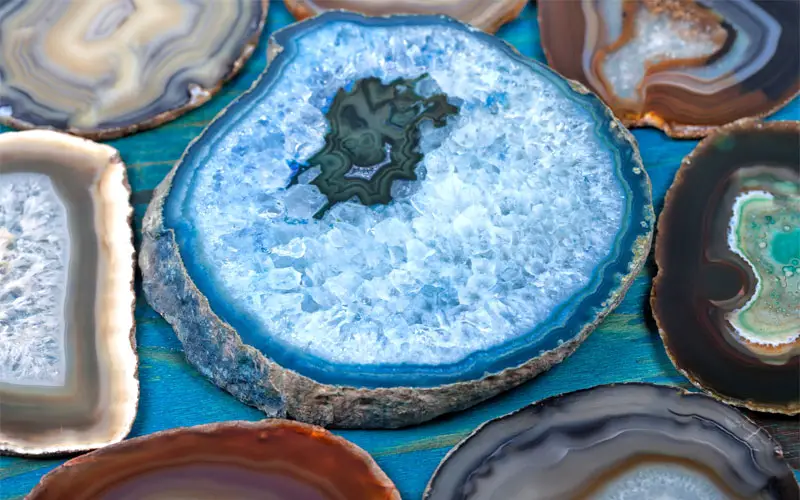
These are small geodes that are sliced up and sold either as-is or dyed. While they have no major value, they can be very pretty display pieces and are relatively cheap. Usually, the minerals forming the interior are of low value.
8. Pyrite Geode
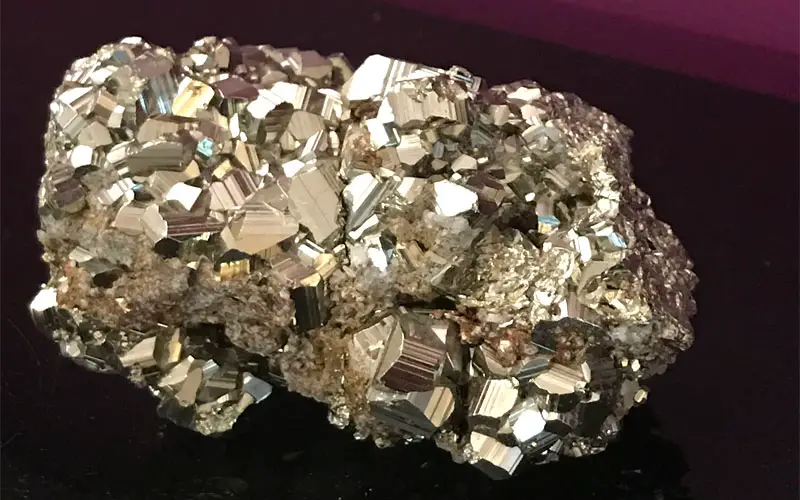
Pyrite was the both the boon and bane of the Gold Rush, due to its similar appearance to yellow gold. If you’re lucky enough to stumble upon a pyrite geode, putting it on display can be a real conversation starter.
9. Quartz
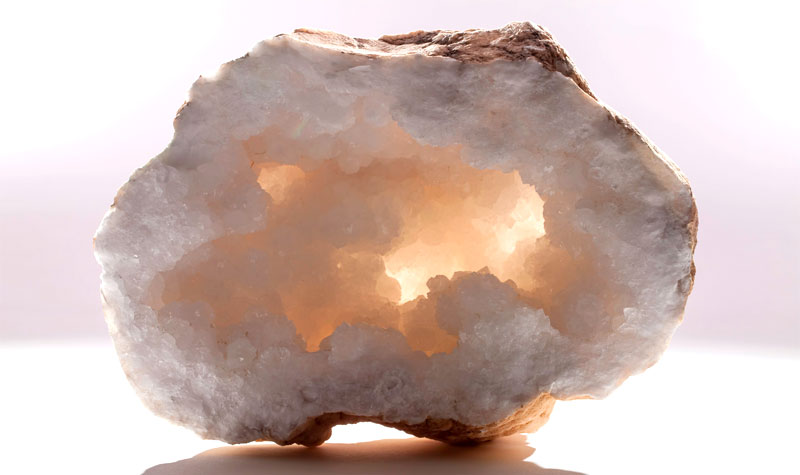
By far, the most common mineral found in geodes is quartz. Quartz can range from clear to pink or purple (rose quartz and amethyst, respectively), as well as other shades based on trace minerals present.
Due to their commonality, quartz geodes are relatively inexpensive and are often dyed before polishing to increase their appeal to consumers.
10. Sedimentary Geode
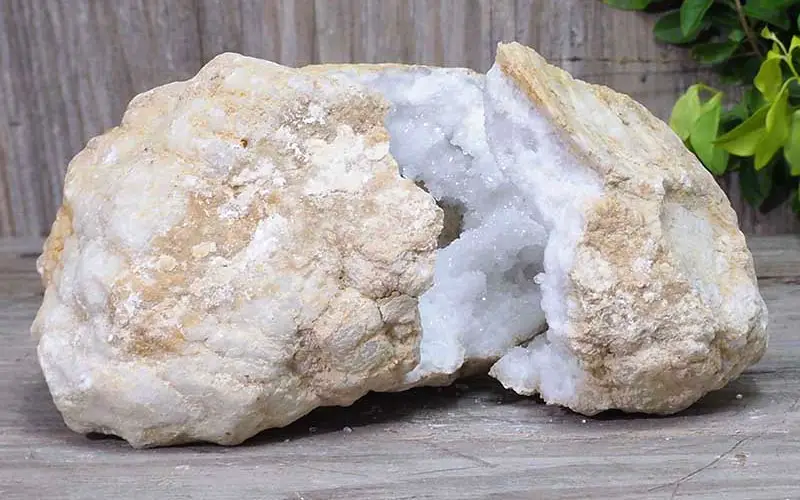
Sedimentary geodes are rather brittle, which makes them both less desirable for collectors and more desirable for harvesting. Found mainly in basalt, calcareous shale, dolomite, and limestone, this type of geode is created when gasses vent, leaving a small cavity.
Conversely, organic matter buried in the sediments may decay to leave a cavity. Once the cavity is formed, various minerals accumulate and form crystals, such as amethyst or quartz.
Because the rock around them is sedimentary, it crumbles easily. This causes the crystals to become exposed. For collectors, this can be frustrating, but the resulting deposit of loose crystals makes it easy to find and collect plenty of your favorite crystal. Also, sedimentary geodes tend to be smaller than volcanic ones, likely due in part to how easily they break.
In some cases, the outer shell of a geode will wear away but a layer of quartz or chalcedony will retain the shape and be washed down streams or otherwise find their way to the surface where they’re collected. These geodes are much cheaper to harvest than digging for them, which increases the chances of damaging the buried geodes.
Read Also: 10 Types of Gravel
11. Volcanic Geode
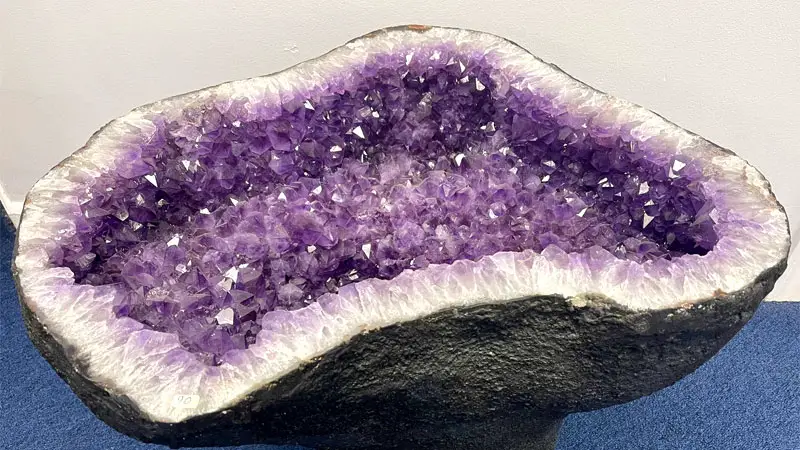
Prized by collectors, volcanic geodes are large and sturdy, formed by similar processes to sedimentary geodes and often containing the same minerals. As lava cools, it sometimes drains out of partially hardened shells, leaving tubes that turn into cathedral geodes later on.
Volcanic gasses may also escape from the hardening lava, which compacts as it cools. Lava naturally contains many of the minerals you know best as crystals, so geodes can form quite easily in the right conditions.
One of the most beautiful aspects of volcanic geodes is the possibility that minerals will form layers. Once cut, the resulting geode will have colorful rings that stand out once polished, making them very popular display pieces.
Also, volcanic geodes can be small but are often quite large, with cavities sometimes large enough for a person if the crystals were to be removed.
See Also: 7 Different Kinds of Magma
This is Only the Beginning…
As we mentioned before, this is just the tip of a geological iceberg. There is another formation type that’s similar to the fossilization process, dozens of additional types based on content and (as touched upon in the amethyst entry) a lot of different types of shape.
There are even massive caves full of human-sized crystals which are considered to be geodes that you can literally walk into!
We hope this little introduction (for that’s what it amounts to) has wet your appetite to learn more about these natural formations. Let us know what kinds of geodes you like best.

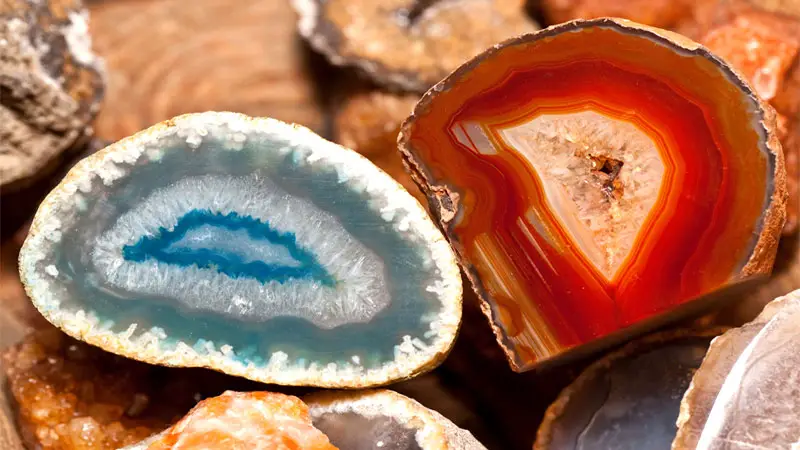
Chalcedony geode